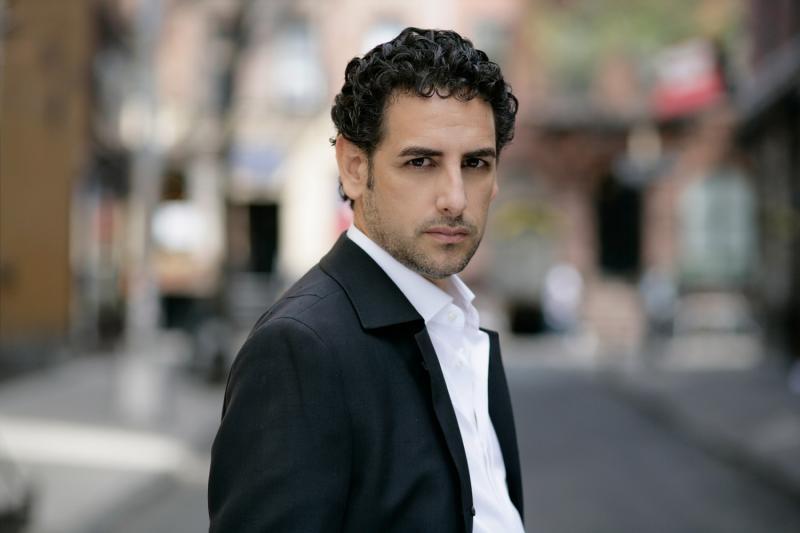Review: GALA EVENING WITH JUAN DIEGO FLOREZ, Royal Festival Hall

![]() Somewhere along the course of music history the word "popular" earned undeserved connotations. "Popular" music became known, in the eyes and the ears of some connoisseurs, as a watered-down version of "real" music - "classical".
Somewhere along the course of music history the word "popular" earned undeserved connotations. "Popular" music became known, in the eyes and the ears of some connoisseurs, as a watered-down version of "real" music - "classical".
Few aficionados were at ease to point out there were rock songs with more innovative harmonies than pieces by unfavoured masters of the 19th century; or that Luciano Pavarotti in the latter part of his career cracked notes with far more regularity than pop stars lip-synched.
Contrary to the woes of some artistic administrators, opera has never been a victim of its "unpopularity" among young people. If anything, the trap into which it has fallen would be that of its never erasable "popular singing": those over-exposed showcases of flying, unstable top notes; high registers which are actually series of screeches; raised arms that recall an owl's wings aloft in the air.
In Juan Diego Flórez's concert programme, the description of "popular tenor arias" is a misnomer: not all the concert's works were the best-known or celebrated. The singing, on the other hand, was far too often executed in a common style.
With many a pure high "C" offering proof that Flórez's tenor is technically sound, it was flawed breath control that sabotaged several fast sequences of quavers and semiquavers - known in opera as "coloratura".
Across several of these parts in his performance of Rossini's "Addio ai Viennesi", notes were not round or equal in power, but often sacrificed in virtue of the harder, higher note that followed - so that it emerged as a spontaneous burst of volume while its neighbours were as flimsy as a ring of thread-thin tinsel on a Christmas tree.
The extremely challenging song could have been better prepared or omitted - and the same could be said for a host of more coloratura arias the tenor contended with. In Rossini's "Bolero" trills were shaky, higher notes dashed off; ornaments such as turns became steep, arduous vocal ascents.
Between the two notes that accompany "ca-ra" in "A te, o cara" from Bellini's I Puritani, Flórez added an unseemly scale that slid up from the A to the D, shortly before almost going flat on the eight notes that constitute "pianto".
Interpolating more notes into the piece for the purpose of excessive adornment, Flórez did himself no favours as a musician, exposing a voice become wayward through the means of less practice or poor breath control. The guise was misleading: other notes demonstrate that the raw instrument still has the full force of its beauty.
Embarking on material more commonly in his repertoire - such as Lucia di Lammermoor's "Tombe degli avi miei" - Flórez unfortunately stuck to his tendency of overcompensating for impure notes with the addition of unforeseen ones. Given the malleability of his voice, he could have lent "Son fra voi! Questi plausi..." from Verdi's Oberto more subtleties and variation of dynamics. Instead, he deliberately plucked out the top notes to isolate them in their volume - severing the lyricism.
In Faust's romantic cavatina "Salut, demeure, chaste et pure" ("Hello, demure, chaste and pure one"), Flórez substituted the proposed tenderness with a brazen panache. Merged together, the words were performed with identical volume despite the music's slow manifestation of blooming ardour.
One of the eeriest arias of all time - "Pourquoi me réveiller," sung by Goethe's suicidal Werther in Massenet's opera of the same name - lost its gloom with breathy affectation. It's a shame the tenor couldn't conjure up his well-honed acting skills to draw on Werther's pain.
By the time Flórez presented the second half of La Fille du Régiment's aria of the nine 'C's, "Ah mes amis", as an encore, the evening had devolved into a set of entertaining and impressive circus acts for listeners to speedily lap up.
Fetching a guitar to sing and play the hit song "Bésame mucho," it was ironically in this campfire-like, more intimate context that Flórez finally offered the diminuendi and inflexions of intonation, tempo and volume the rest of the concert had so sorely lacked. The "pop" song of the repertoire became the lucky one to undergo artistic singing.
Under Sascha Goetzel's baton the London Philharmonic Orchestra became overly brash, playing with maximal emotionality. Raspberries were too often blown by brass, who were sometimes ahead of the ensemble's other sections; the strings' trills somehow prompted them to separate. In the sumptuous, sombre intermezzo to Puccini's Manon Lescaut, the violins stumbled into the first chord, following rather than joining with lower strings.
Given Flórez's frequently well-crafted artistic interpretations, the concert was an imitation of what could have been - not unlike live transmissions of symphonic playing across 1940s wireless radios: inelegant and giving the impression that an outside force has tampered with performers' instruments.
Photo credit: Kristin Hoebermann
Reader Reviews
Videos

